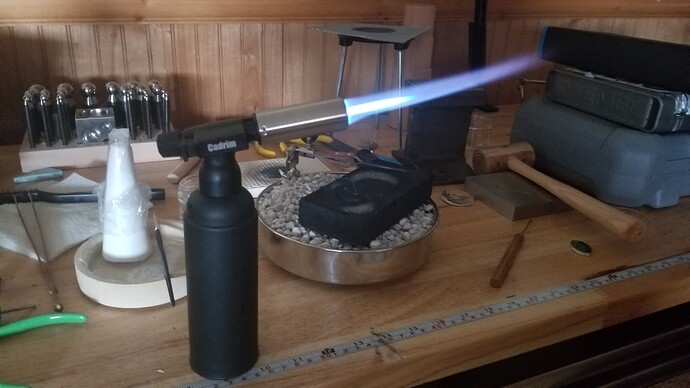Aggie,
Oh man! Great questions! I just love that someone is diving in and asking me a million questions. This is the sort of feedback I need!
I can only thank you (and others who commented here) for sparing your precious time with a newbie like me. ![]()
![]() I imagine when I’m 15 years into this I will hopefully pay it forward and help others who are just starting out… Well, that is if the world is even in tact then and we’re all still able to do this work. Ahem…
I imagine when I’m 15 years into this I will hopefully pay it forward and help others who are just starting out… Well, that is if the world is even in tact then and we’re all still able to do this work. Ahem…
Anyway, to answer your questions! I basically did 2 months of solid research. Mostly I bought college level textbooks and many older “guides” from the 60’s/70’s. I’m one who really wants the real knowledge before diving into something new and don’t want “sugar coated” versions of information. I do not intend on turning this into a little hobbyist effort. I want to jump right in to learning how to do the good stuff.
What surface are you soldering on? Are you concentrating your heat on one spot? Do you keep the flame moving? How long do you heat it? How far from the piece are you working the flame? What part of the flame are you using as the point of contact with the metal? What color does the metal turn as you are heating? How do you place the solder? Does the solder move as you heat the piece up? How long are you heating the piece? So you have a solderite board? How much borax are you mixing into the distilled water? are you heating from below or above the piece? These are all question we need to know so we can better zero in on what you are doing.
I’m using a rotating annealing pan filled with pumice, with a nice charcoal block plopped on top. I tired to purchase the largest “mini” butane torch I could find. I still think its probably not adequate enough as most people here are saying it probably won’t do. Here’s a picture of the largest size my mini gets. That’s maybe 4 inches in length on the flame?
Yes, I’m moving the flame gradually around the whole of the bezel loop (just trying to do a basic seam before soldering it to the backplate). You’ll see some silver in the picture there, that’s a different story, which I wouldn’t mind telling. A truly funny one I might share, but because of what happened, I immediately stopped working with the silver and decided to try with copper instead.
It seemed to take up to a minute or longer (60-120 seconds plus actually) to get the solder to melt at all with the copper bezel - at that point all it did was ball up into a drop and stop, never truly flowing up the seam. As for what part of the flame I’m using - well, I’m experimenting with all of it. I tried using the tip area at the end of the flame, then when I got frustrated after a minute went by and nothing - I zeroed in on it closer coming to the middle of the flame - thus witnessing a “green” flame effect and the color turn many colors. And, as for how I placed the solder; I placed a tiny 4mm piece or so (hard solder) directly at the bottom of the seam (touching) with the steel soldering pic (in photo). What I DID NOT DO is directly douse the solder in flux in advance, which some have said I should have done. As for the consistency of the borax - Anthony from “the bench” on youtube makes it look so easy, and he’s a master silversmith! All he uses is the “cone”. I used distilled water to avoid minerals interfering, and made a slurry paste consistency. When that didn’t work, I tried making it more watery. I perhaps didn’t clean the copper joinings well enough. They were well sanded and flushed out perfectly. I heated from above on this tiny one because I didn’t think I would need to do it from below when just dealing with a simple circle joining for a stone. I wasn’t yet to the stage of soldering the bezel to the copper backplate.
I will note that taking a “class” isn’t’ really doable because I left the city a long time ago (couldn’t stand the rat race, to say), and have happily been in the country the last ten years. That puts me at 3 hours away from the nearest studios where I would be able to take in person classes. I’m doing as much research as I can on my own. And so, I really do appreciate all of everyone’s help here. More than I can say!
